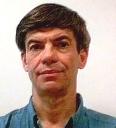Wednesday, May 13, 2020 at 10am
Abstract:
Several lines of thought are addressed to understand the interactions between the single-celled living world and electricity. Among these, the WWW (What-Where-When) paradigm, focused on the electrical charges present in the bacteria and in its environment, seems promising.
An investigation is presented in this sense, with a "top-down" logic. It turns out that, even if valuable information is now available thanks to modern experimental means of investigation and microscopy, a large number of questions of the WWW paradigm are still unanswered, due to the lack of direct access to electrical quantities.
Biologists often use, but not only, indicators indirectly related to electrical quantities, which are well suited to provide biological and physiological information. Today, and for several decades now, there is a growing need to promote trans-disciplinary work between physicists and biologists, each learning from the other.
Several lines of thought are addressed to understand the interactions between the single-celled living world and electricity. Among these, the WWW (What-Where-When) paradigm, focused on the electrical charges present in the bacteria and in its environment, seems promising.
An investigation is presented in this sense, with a "top-down" logic. It turns out that, even if valuable information is now available thanks to modern experimental means of investigation and microscopy, a large number of questions of the WWW paradigm are still unanswered, due to the lack of direct access to electrical quantities.
Biologists often use, but not only, indicators indirectly related to electrical quantities, which are well suited to provide biological and physiological information. Today, and for several decades now, there is a growing need to promote trans-disciplinary work between physicists and biologists, each learning from the other.
Documents to download
Location infos
 Registration on the DISCORD server . Once there,say hi, and tell us if you are PhD, intern, or permanent people, and if applicable, in which research group.
Registration on the DISCORD server . Once there,say hi, and tell us if you are PhD, intern, or permanent people, and if applicable, in which research group. 


